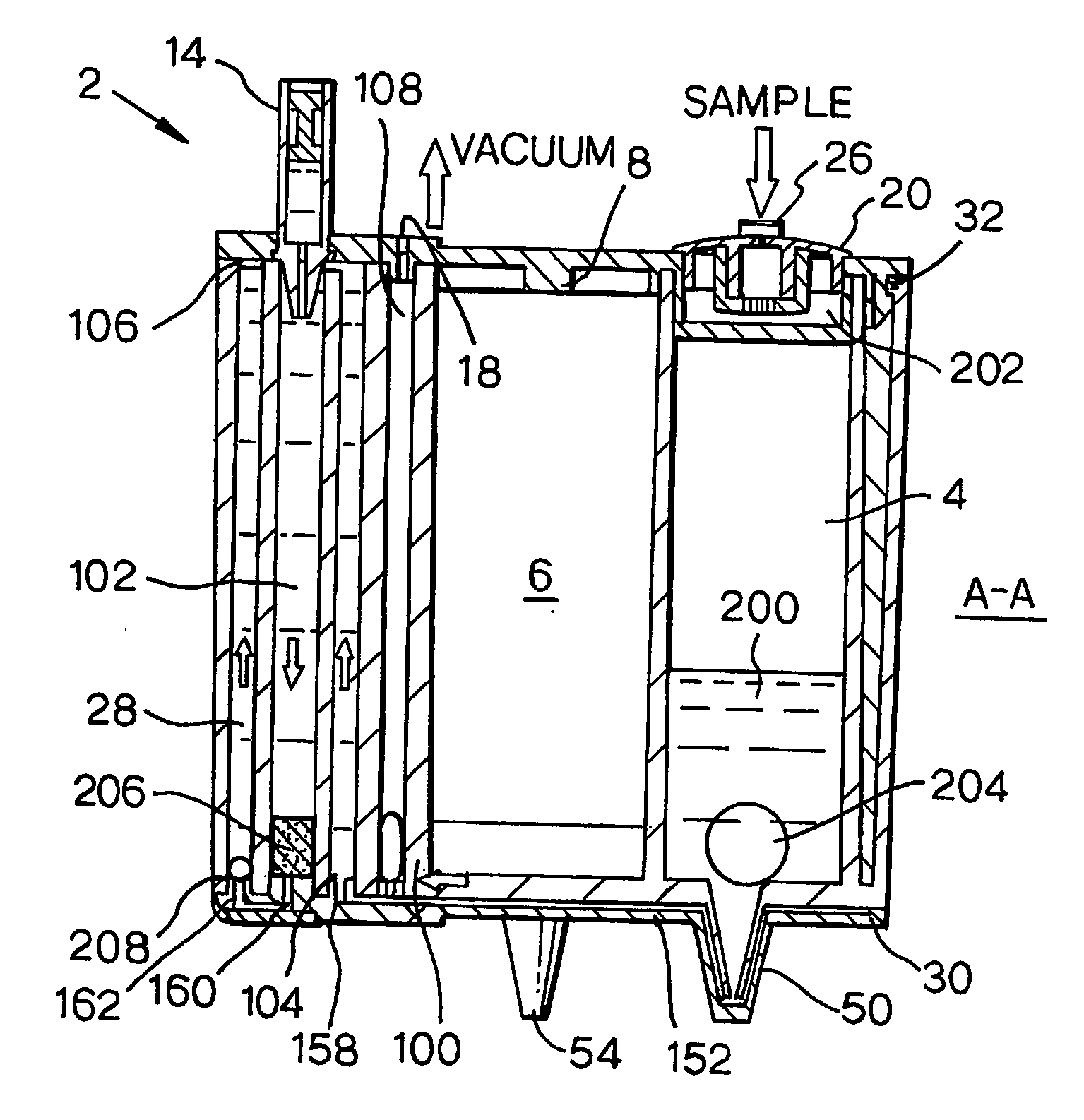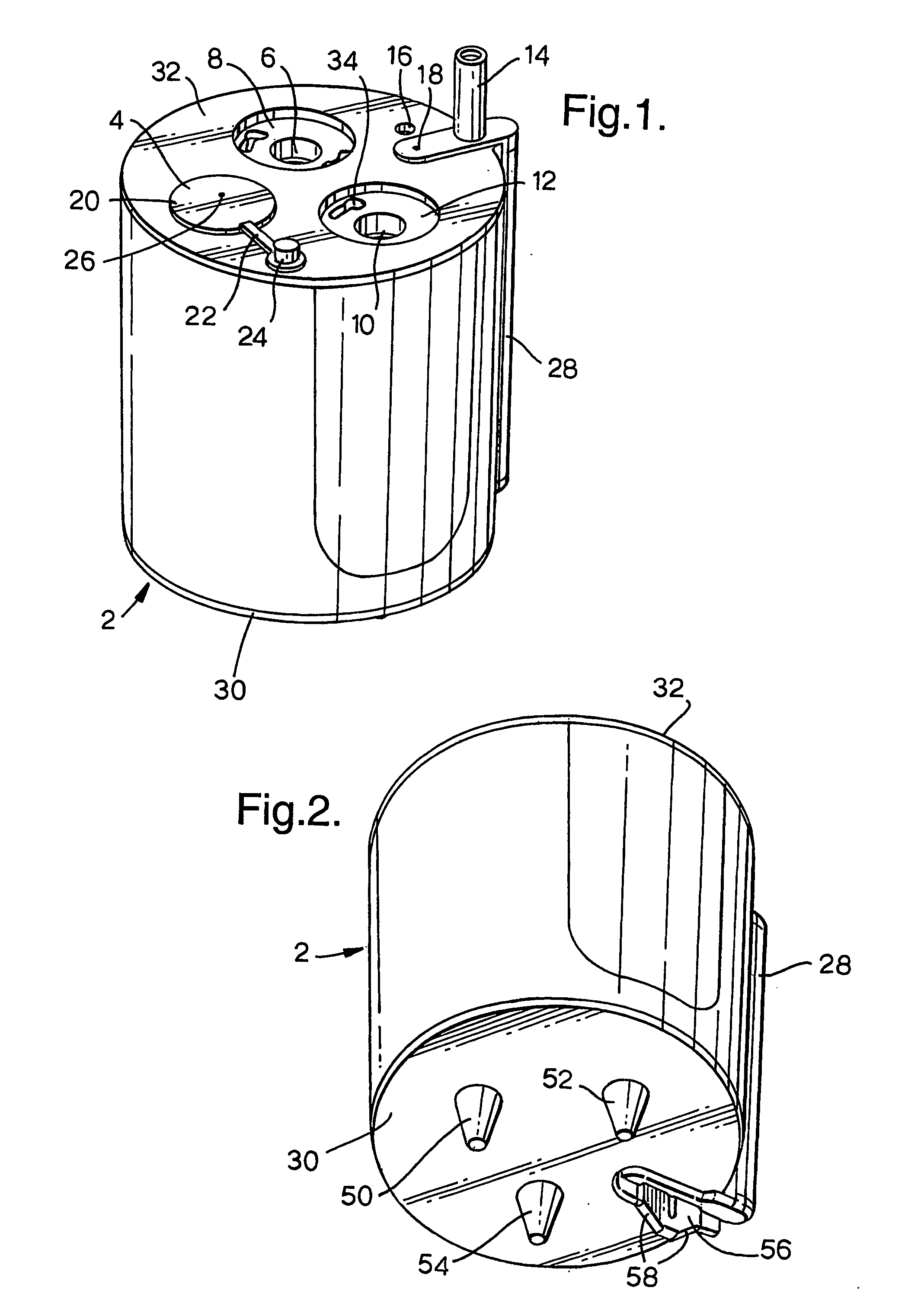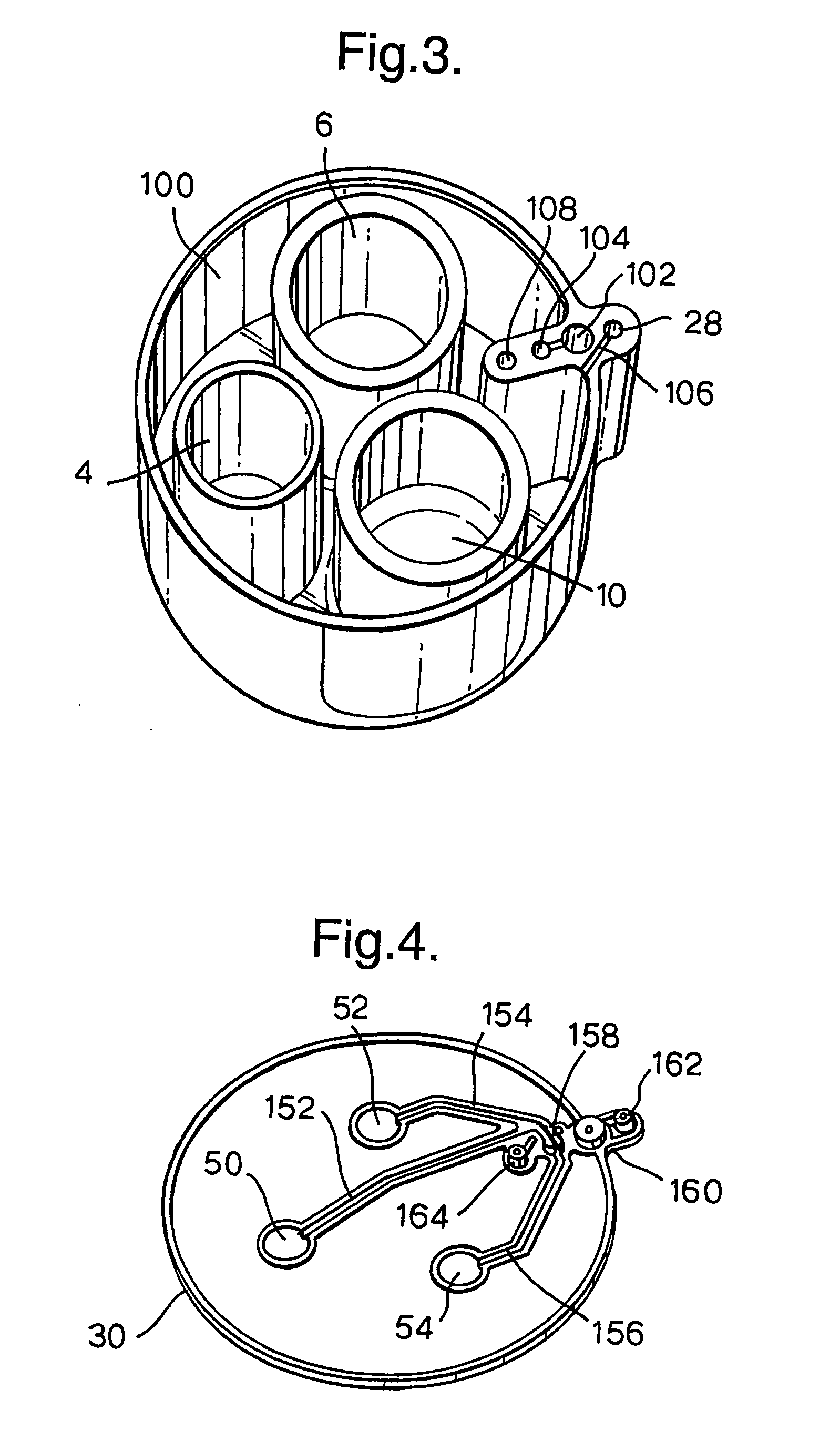Apparatus for processing a fluid sample
a fluid sample and apparatus technology, applied in the direction of fluid controllers, chemistry apparatus and processes, laboratory glassware, etc., can solve the problems of inability to meet the needs of non-skilled laboratory workers, and inability to process fluid samples in a non-laboratory environmen
- Summary
- Abstract
- Description
- Claims
- Application Information
AI Technical Summary
Benefits of technology
Problems solved by technology
Method used
Image
Examples
Embodiment Construction
[0024] All publications cited herein are hereby incorporated by reference in their entirety, unless otherwise indicated.
[0025] As used herein the term “fluid communication” means that a path through which fluid can in principle flow exists between the chambers in question although fluid flow may be restricted by one or more passive means for restricting the flow of fluid.
[0026] As used herein the term “continuous fluid communication” means that a path through which fluid can flow exists at all times between the chambers in question.
[0027] As used herein the term “a passive means for restricting the flow of fluid” shall be taken to mean a means that restricts fluid flowing through a given path but wherein the restriction can be overcome passively namely purely by the application of positive or negative pressure to either the means or to the flow path itself, thereby allowing fluid flow along the given path. Optionally such means may be opened by passive action or closed by passive...
PUM
| Property | Measurement | Unit |
|---|---|---|
| volume | aaaaa | aaaaa |
| temperature | aaaaa | aaaaa |
| diameter | aaaaa | aaaaa |
Abstract
Description
Claims
Application Information
 Login to View More
Login to View More - R&D
- Intellectual Property
- Life Sciences
- Materials
- Tech Scout
- Unparalleled Data Quality
- Higher Quality Content
- 60% Fewer Hallucinations
Browse by: Latest US Patents, China's latest patents, Technical Efficacy Thesaurus, Application Domain, Technology Topic, Popular Technical Reports.
© 2025 PatSnap. All rights reserved.Legal|Privacy policy|Modern Slavery Act Transparency Statement|Sitemap|About US| Contact US: help@patsnap.com



